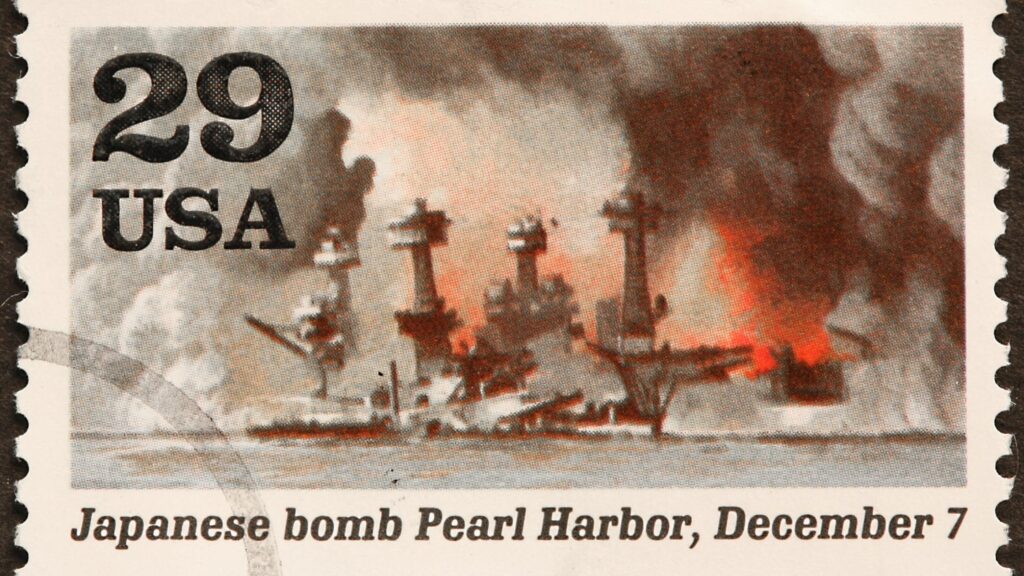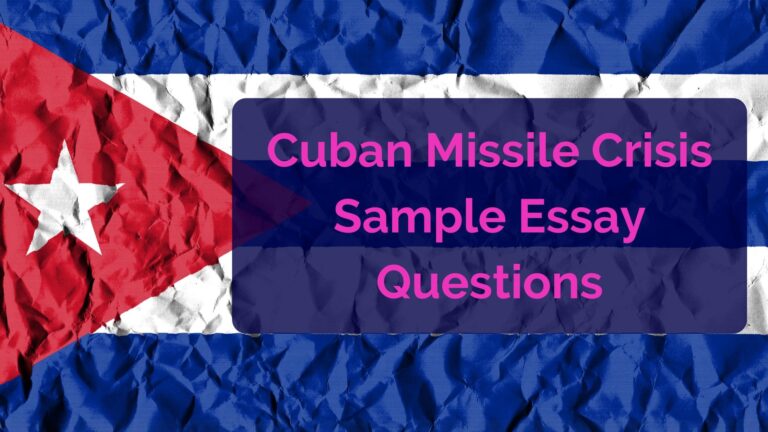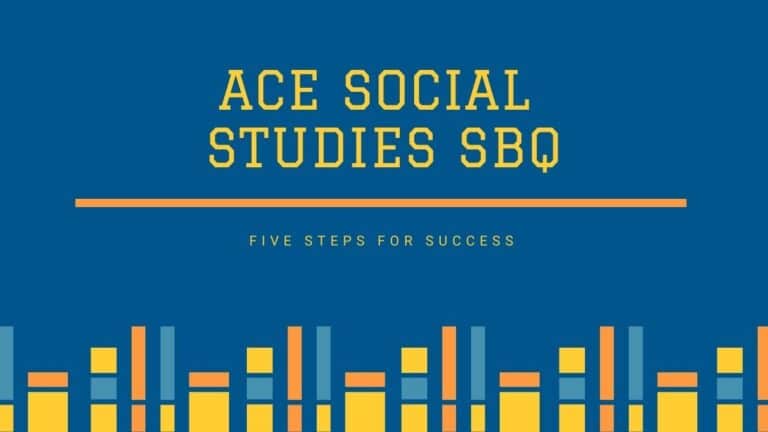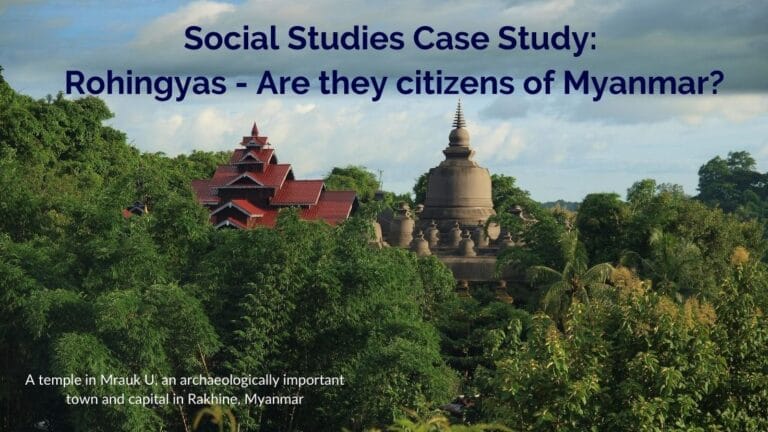Reasons for outbreak of WWII in the Pacific: 5 SEQ Samples
This chapter spans a few decades, starting from the development of Japan to a modernised country to its attack on Pearl Harbour. Thus, students have to be careful what points to use as the points may change depending on the time period specified in the question.
As usual, for students who simply want to download the material, you can find it in the download link below. For the rest, enjoy your reading.
1. Explain why relations worsened between America and Japan in the 1920s.
(P) Relations worsened between America and Japan due to racism against the Japanese.
(E) American society practised racial segregation and discrimination against East Asians, including the Japanese. This practice resulted from white settlers in America wanting to protect their economic interests from Asian competition, especially in jobs starting in the 1850s. This continued as more immigrants from Asia, including Japan, arrived throughout the late part of the 19th Century.
(E) An organised movement, the Korean and Japanese Exclusion League, was formed to stop immigration from Korea and Japan. In 1907, the U.S. passed the Japanese Exclusion Act, which forbade Japanese immigration. This policy change greatly offended Japan and its immigrants in the U.S., excluded from American society, causing a loss of jobs and living standards.
(L) Hence, they felt that the policy was unfair for Japan. Thus, relations between the two countries worsened.
(P) Relations worsened between America and Japan as America mistreated them at the Paris Peace Conference.
(E) At the conference, the PM of Japan, Prince Konoe, called for eradicating racial discrimination. He proposed a racial equality clause in the covenant of the LON. However, western countries rejected the idea. In addition, the Washington Naval Conference, organised by the USA, also proposed reducing Japan’s naval strength to 1.67, which was much lesser than the U.S. strength of 5.
(E) As a result, Japanese leaders felt that they were not respected nor treated fairly by America. In both cases, the Japanese delegations felt that they were not treated as equals and felt that they were snubbed.
(L) Thus, relations between the two countries worsened.
2. Explain the reasons behind Japan’s expansionist foriegn policy in the 1930s?
(P) One reason was Japan’s desire to build an empire in the Asia-Pacific region.
(E) Japan was the leading power in Asia as it industrialised and modernised faster than other Asian countries. However, Japan was disadvantaged and outmatched by western powers as they had established colonies earlier. For Japan to survive among the western powers and develop, the military called for expansion into areas that belonged to Russia and China and into British Malaya, French Indochina and the Dutch East Indies to build the Japanese empire.
(E) By the 1930s, Japan had expanded to include Formosa, Korea, Manchuria and the Pacific Isles. To the Japanese, they felt it was necessary to expand as they saw that the Western imperialist powers had also taken other lands as colonies. They wanted to emulate them and build an empire just like these colonial powers.
(L) Hence, Japan’s desire to build an empire was a reason for its expansionist policy.
(P) Another reason was Japan’s aim of creating a ‘Greater East Asia Co-Prosperity Sphere.
(E) The Japanese took it upon themselves to be the leaders of Asia as Japan felt that Western nations should not control Asia. As Japan was the most potent military power in Asia, the Japanese thought they should lead other nations to end Western imperialism. With the end of Western imperialism, Japan would create a ‘Greater East Asia Co-Prosperity Sphere’, where the countries in the region would be part of the Japanese empire. Japan would take over the Western powers as the leading nation, allowing Japan to tap on their resources like oil, tin and rubber so that Japan could be self-sufficient and use them to produce industrial goods.
(E) These countries would also serve as markets for Japanese goods. Japan believed that these countries would also benefit from this economic arrangement. They felt that it would be better for Asians to be the colonial masters rather than the Western nations.
(L) Thus, its desire to unite the rest of Asia under its control also led to its expansionist policy.

3. Explain two factors that contributed to the outbreak of the Second Sino-Japanese War in July 1937
(P) The Sino Japanese war started because of Japan’s expansionist foreign policy due to the need for important resources.
(E) Japan needed to acquire foreign resources and rely on trade with other countries to import essential resources such as oil. However, restrictive trade practices, especially after the Great Depression, made it even more difficult for Japan to obtain the raw materials it needed from markets it did not directly control. Thus, they decided to control territories near Japan, such as Manchuria, to utilise their resources. Manchuria was a tempting target as it was a source of minerals and wheat. The invasion of Manchuria provided Japan with much-needed resources essential for its ambitions of becoming a recognised world power just like the Western countries.
(E) To ensure it had a reason for invading a territory of China, a Japanese officer detonated a bomb near the South Manchurian Railway in 1932. On this pretext, the Japanese army invaded Manchuria. This was known as the Muken Incident. This started Japan’s first incursion of China, which gave the Japanese the impetus to launch a full-fledged invasion of China in 1937.
(L) Therefore, the outbreak of the Sino-Japanese War in 1937 was due to Japan’s need for resources that could be found in Manchuria and China.
(P) The war also started because of deteriorating relations between the Japanese and the Chinese.
(E) Several incidents like the Chinese refusal to recognise the newly formed state of Manchukuo and the instances of fighting between Japanese and Chinese troops in Northern China also increased tensions between Japan and China. At the same time, China seemed to be getting its act together under the Republican leadership of Chiang Kai-Shek. Japan was worried that further inaction would allow China to recover its strength.
(E) By 1937, it was clear that Japan was ready to invade China. The deteriorating relations between the two countries, together with the rise of the Republic of China pushed Japan into an invasion of China. In 1937, Japan used the Marco Polo bridge incident as an excuse to invade China from Manchuria.
(L) Thus, the deteriorating relations between China and Japan was responsible for the war
4. The outbreak of WWII in the Asia Pacific was due to the weakness of the League of Nations. How far do you agree with the statement?
4. “The outbreak of WWII in the Pacific was due to the weakness of the League of Nations.” How far do you agree with the statement?
(P) The weakness of the League of Nations led to the outbreak of war in the Asia Pacific.
(E) For example, the League was unable to stop the invasion of Manchuria (Mukden incident). The attack resulted in the League forming the Lytton Commission to investigate it. It criticised Japan and refused to recognise Manchukuo. Japan rejected the commission’s proposal on Manchuria and withdrew from the League. However, the League took no further action against them. Similarly, the League also failed to act during the 2nd Sino-Japanese war, a full-scale invasion of China caused by the Marco Polo bridge incident. The League was too occupied with developments in Europe as Hitler was attempting his expansionist policies.
(E) As a result, the Japanese military leaders believed the LON was powerless to stop them. They became bolder and were more confident in pursuing an expansionist policy, leading to the pre-emptive strike on Pearl Harbour.
(L) Thus, this led to the U.S. declaration of war in the Asia Pacific against Japan.
(P) Another reason for the outbreak of WWII in the Asia Pacific was the economic crisis and overpopulation.
(E) In Japan, there was rapid population growth, with 45 – 65 million people. The population explosion meant that there was limited land to grow food and relocated citizens. As farming methods were labour intensive and slow, this also led to a shortage of rice. Another problem was the Great Depression. Protectionism by the USA and Britain meant growing opposition to free trade and increasing restrictions and taxation on Japanese exports. Protectionism led to the fall of demand for Japanese exports causing an economic depression.
(E) The failure of the government to solve these problems led to discontentment and support for a more militaristic government. Thus, Japan expanded towards Manchuria and, eventually, China. When the invasion of China faltered, they bombed Pearl Harbour to enable Japan’s expansion into Southeast Asia.
(L) Thus, the attack led to a U.S. declaration of war against Japan.
(J) In all, the primary reason would be the failures of the League of Nations. Japan would not have been able to expand if the LON had intervened forcefully, which had far more significant military strength than Japan at this point. The failure to do this caused Japan to be more ambitious, with growing support for the expansion plans of its militaristic government. Thus, the breakdown of the LON was the primary reason for an outbreak of war in the Asia pacific.

5. “The Japanese bombing of Pearl Harbour was a mistake.” Do you agree? Explain your answer.
(P) The attack on Pearl Harbour was a mistake as it had an error in its execution.
(E) The Japanese planned for the complete extermination of the US Pacific fleet in Pearl Harbour. However, it failed to achieve its objectives. The attack on Pearl Harbour had not brought about the desired devastation as Japanese war planners had envisaged. Though the attack inflicted large-scale destruction, the damage was not significant for American fuel storage, maintenance, and intelligence capabilities.
(E) The USA quickly repaired damaged battleships. The Japanese did not disrupt the oil supply, and the Naval repair dock was virtually unscathed. In addition, three aircraft carriers were out at sea during the attack. Had Japan destroyed the American carriers, the Pacific Fleet would not conduct offensive operations for a year or so. The elimination of the battleships left the U.S. Navy with no choice but to rely on its aircraft carriers and submarines, which proved very effective in halting and reversing the Japanese advance.
(L) As the Americans were able to recover quickly, it appeared that the attack on Pearl harbour was unsuccessful, was a waste of Japan’s effort and did not achieve what the Japanese themselves had planned.
(P) The attack on Pearl Harbour was not a mistake as it did accomplish what it set out to do, which was to buy time.
(E) The pre-emptive strike intended to protect Imperial Japan’s advance into Malaya and the Dutch East Indies for their natural resources such as oil and rubber. By crippling Pearl Harbour, the US Pacific Fleet would be neutralised and put out of action. Americans would be too busy repairing the damages.
(E) Thus, the attack on Pearl Harbour would help to buy time for Japan’s advance into Southeast Asia. The Japanese anticipated that after this crippling attack, the Americans would not launch a costly war to help recover these territories. Within six months, the Japanese had captured European bases stretching from Hong Kong in the north to Java in the south. Even the supposedly impregnable Singapore had fallen, and India and Australia looked threatened.
(L) Thus, it proved that the Japanese attack on Pearl harbour was a success.
(J) In conclusion, the Japanese bombing of Pearl Harbour was a mistake. It was a success in the short term as it allowed Japan free reign in Southeast Asia. However, the attack made the entire United States unite against the Japanese. With their massive production base, the United States quickly outproduced Japan, even after its committed resources in Europe. After Germany fell, it was clear that Japan could not prevail. Thus, the Pearl Harbour bombing was a long-term failure as it only provoked America into joining World War II.
Conclusion
I hope you have found these sample SEQs for WWII in the Pacific useful. More information about the O level History Elective can be found here. For more SEQ samples, you can use the index below for navigation. I have also included another download link for a pdf version of these sample SEQs.
- Treaty of Versailles
- League of Nations
- Rise of Stalin
- Stalin’s Rule
- Rise of Hitler
- Hitler’s Rule
- Reasons for World War II in Europe
- Reasons for the defeat of Germany
- Reasons for World War II in Asia-Pacific
- Reasons for the Cold War
- Korean War
- Cuban Missile Crisis
- Reasons for the end of the Cold War

Critical Thought English & Humanities is your best resource for English, English Literature, Social Studies, Geography and History.
My experience, proven methodology and unique blend of technology will help your child ace their exams.
If you have any questions, please contact us!







